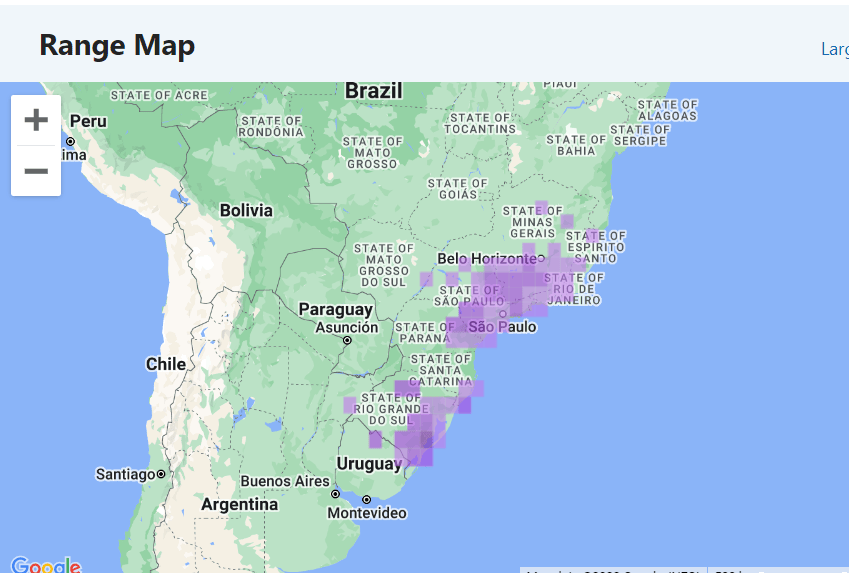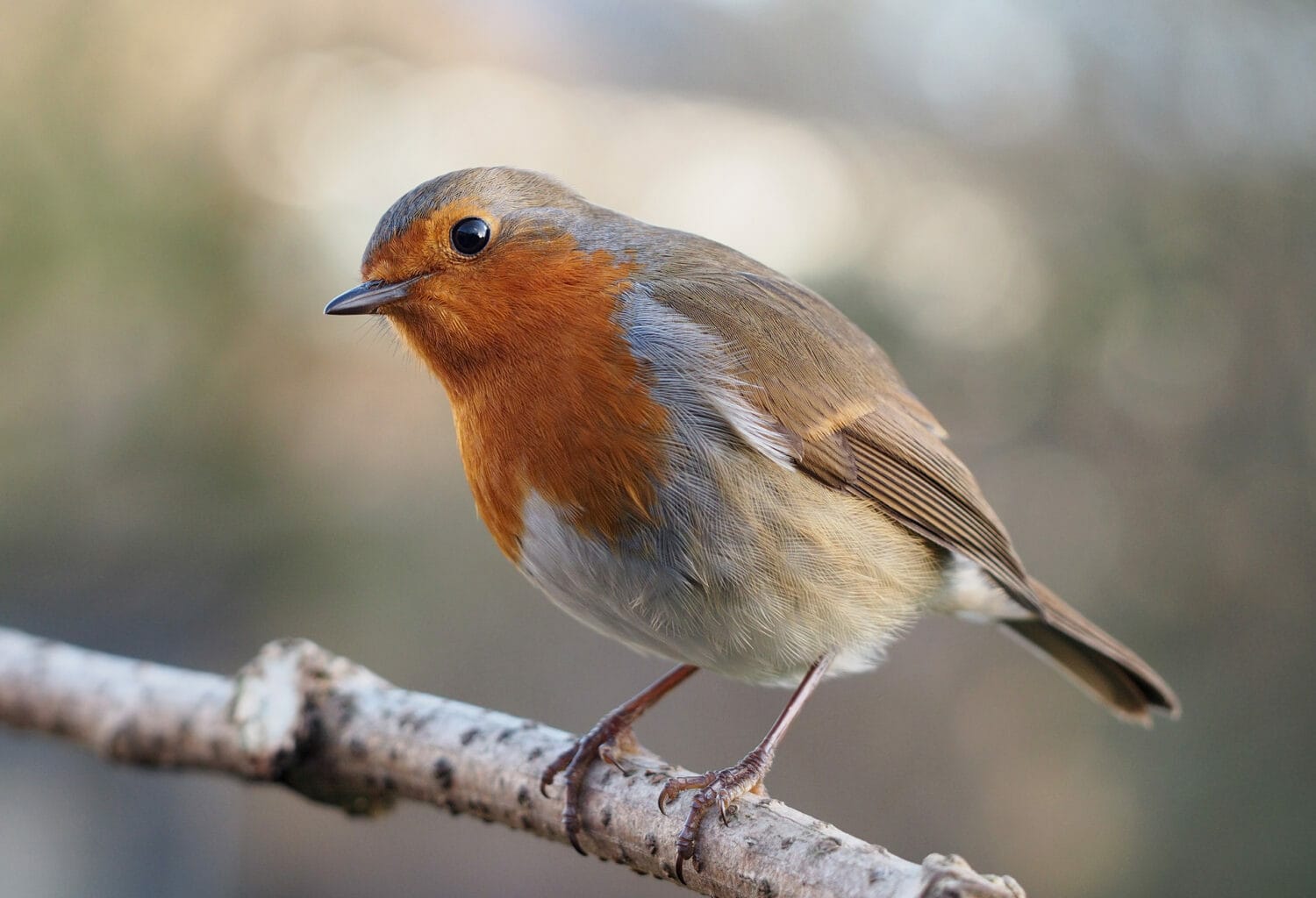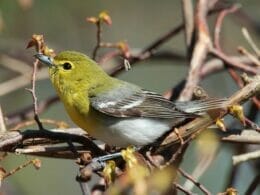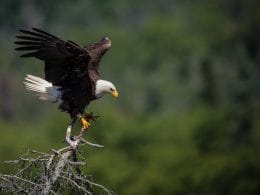Today, my goal is to find 10 species of birds that are brown with an orange chest. I can only think of a couple offhand and am fairly certain we will have to look beyond the United States to find more. Let’s start by considering why birds need colored feathers at all.
Why do birds need colored feathers?
There are two main reasons why birds have colored feathers. Firstly, for camouflage against predators. This may be why females are often so muted in tone as they need to blend in to protect their chicks. Secondly, male birds are often very colorful and this is to attract a female for mating. The colors show her that he is a good genetic choice.
How are feathers colored?
Feathers are colored by the presence of pigments. There are 2 types of such pigment.
Melanin
Produces black, brown, orange and grey feathers. It is already present in the birds’ bodies.
Carotenoids
Produces all the other brighter colors (except for blue). It is not naturally occuring in the birds’ biology. It has to be ingested from certain foods.
Blue Feathers
There is no such thing as blue feathers. They are caused by light scattering, a trick of the light. For more information, please read our Black Birds with Blue Heads post.
So, today we are looking for those more muted tones. It looks like the species we find might well be females.
The Birds
American Robin (Turdus migratorius)

Identification and Size
The American Robin is actually a thrush and as so, is a large songbird. Its back is gray/brown and the belly a dark orangey red. The female is more muted than the male
Length: 7.9 – 11.0 inches
Wingspan: 12.2 – 15.8 inches
Weight: 2.7 – 3.0 ounces
Distribution

The American Robin is widespread acros continental America, into Canada and Alaska in the north and through Mexico in the south. It is often visible as it feeds on lawns and open parkland.
Call
Diet
This robin is a typical thrush, looking for worms and insects in grassy areas. Although it is most commonly seen in urban parks and gardens, it is equally at home looking for bugs in wilder areas.
Interesting Fact
American Robins are seen as the bringers of spring but actually they don’t really go very far in winter. Unlike other birds that rely on bird feeders to sustain them in the colder months, this thrush feeds on winter berries away from gardens and that is why they are seen less.
Zebra Waxbill (Amandava subflava)

Identification and Size
A vivid orange breast on this rather rare waxbill. The back is olive/brown and the rump, a bright red.
Length: 3.5 inches
Weight: 0.18 – 0.38 ounces
Distribution

The Zebra or Orange-breasted Waxbill is found in south-western and north-eastern Africa.
Call
Diet
This waxbill is a predominately seed eater but will take insects, particularly during breeding periods.
Interesting Fact
Courtship is a formal affair for this little bird. There is lots of bowing and neck preening to establish appropriate relationships.
European Robin (Erithacus rubecula)

Identification and Size
A small and round robin with brown upper parts and the distinctive orange/red breast, which give it the local name of Robin red-breast. The orange runs up into the face and down into paler gray underparts.
Length: 5.5 inches
Weight: 0.49 – 0.88 ounces
Distribution

The European Robin is a common sight across the whole of Europe and extending into northern Africa and the Middle East.
Call
Diet
The European Robin has a varied diet consisting of small vertebrates, invertebrates, fruits and seeds.
Interesting Fact
The European Robin has a wide range of calls and songs. They vary throughout the year and can be warbling, ticking, peeping or even mimicry.
Sharp-shinned Hawk (Accipiter striatus)

Identification and Size
This is relatively small hawk but is very agile as it hunts through the forest. The breast might be a streaky orange or fully shaded running into a pale belly. The back ranges from brown in younger birds to darker in adulthood.
Length: 9.4 – 13.4 inches
Wingspan: 16.9 – 22.1 inches
Weight: 3.1 – 7.7 ounces
Distribution

The Sharp-shinned Hawk is resident across the United States and into Canada and Alaska. To the south, it can be found in Central America and north-western areas as well as the mid-east of South America.
Call
Diet
This is a swift and fast raptor that hunts other small birds, usually in the forest but it will take birds at times from backyard feeders.
Interesting Fact
The Sharp-shinned Hawk gets its name from its legs. They are totally featherless all the way down to the toes.
Orange-breasted Trogon (Harpactes oreskios)

Identification and Size
Both sexes are alike with a bright orange breast bordered by a paler yellow. The back is a cinammon brown with black and white bars on the wings. The neck and head are a muted olive yellow.
Length: 9.8 – 12.2 inches
Weight: 1.7 – 2 ounces
Distribution

This trogon is found in low level forests across South East Asia.
Call
Diet
The Orange-breasted Trogon has a wide diet taking available insects and plant material. It gathers food from the ground and the mid-canopy.
Interesting Fact
Using the sally-stall technique, the Orange-breasted Trogon pursues insects from leaf to branch to leaf and then startles it by stalling infront of them. Catching the prey unawares, it then pounces.
Russet-bellied Spinetail (Synallaxis zimmeri)

Identification
Endemic to Peru, this little spinetail is endangered and very rare. It’s russet orange breast runs down to the belly and tail. Above and on the wings, it is gray/brown.
Length: 6.5 – 6.7 inches
Weight: 0.42 – 0.49 ounces
Distribution

The Russet-bellied Spinetail is classed as Vulnerable and is resident in western Peru in the Andes.
Call
Diet
The Russet-tailed Spinetail is omnivorous but eats mainly flying insects and spiders.
Interesting Fact
This spinetail is endangered because of habitat loss and the inability to expand its range due to there being no corridors to other suitable locations.
Orange-breasted Thornbird (Phacellodomus ferrugineigula)

Identification
This thornbird is stunning considering it is largely brown. The warm tones fade into a muted orange on the breast.
Length: 7 – 7.2 inches
Weight: 0.84 – 0.88 ounces
Distribution

This thornbird lives in wetland or marsh habitats and can be found on the eastern side of South America.
Call
Diet
There has been little research on this elusive thornbird but it is thought that it eats mainly arthropods.
Interesting Fact
There is so little known about this bird so we couldn’t find much about its behavior. We did find a list of the thornbird’s name in lots of different languages and found it very interesting. You can also look up the names of other birds. Click here.
European Stonechat (Saxicola rubicola)

Identification and Size
This is the female stonechat and she is brown overall with a pale buff belly moving into an orange chest.
Length: 5 inches
Weight: 0.5 – 0.6 ounces
Distribution

The European Stonechat is exactly that. A common bird throughout Europe and expanding into North Africa and the Middle East.
Call
Diet
Predominately insects and their larvae. Occasionally it will eat seeds or fruit.
Interesting Fact
The stonechat is so named because its call sounds like stones being clicked together.
Brambling (Fringilla montifringilla)

Identification and Size
This is a very attractive little finch. Out of breeding the birds are orange breasted with a white rump and intricate brown, black and white patterns on the wing.
Length: 5.3 – 6.2 inches
Weight: 0.6 – 1 ounces
Distribution

Widespread across Western Europe and into Asia, all the way across to Japan.
Call
Diet
The Brambling eats mostly fruit and seeds but will take insects at opportune moments.
Interesting Fact
This interesting little finch is migratory and at times, large flocks of possibly millions of birds can be seen in Europe.
Conclusion
Well, we nearly made it. There are plenty of other birds with orange breasts and green or black plumage but we could only find 9 brown birds with orange plumage. But what a great group they are. My favorite would be the Orange-breasted Thornbird as I think it is stunning for what should really be a dull brown bird. We hope you enjoyed reading our list.
FAQs
In the Unites States, it would have to be the American Robin as it is most commonly seen and widespread.
That is the Barn Swallow and I really wanted it on our list but it just isn’t brown!
There are numerous orioles that all have orange or yellow bellies and black backs.
The Brown Thrasher is a very reddy brown bird. It has a buff breast and so we couldn’t include it.
Outro comment










